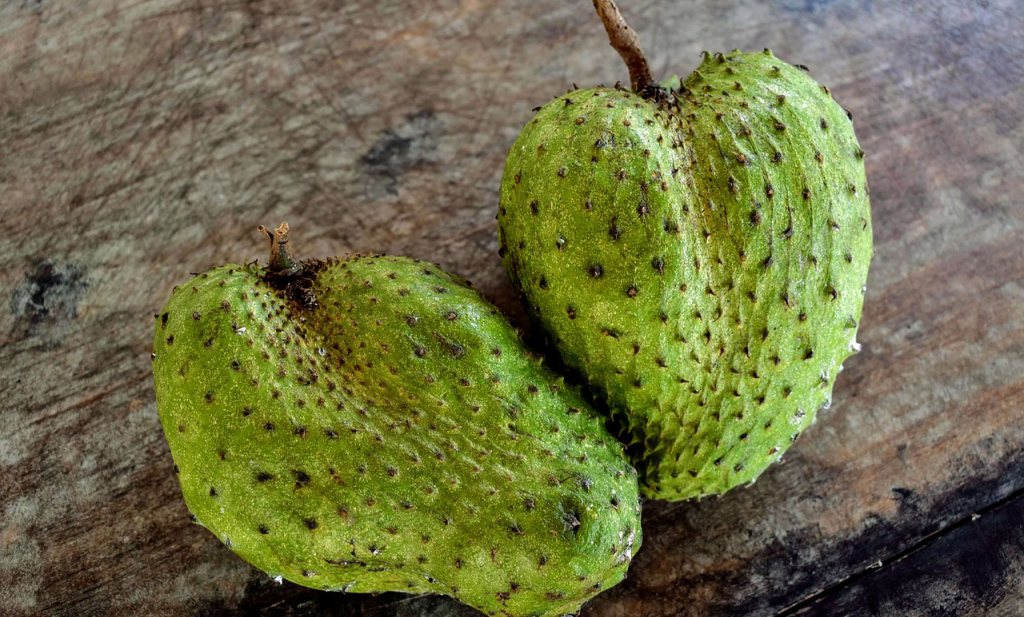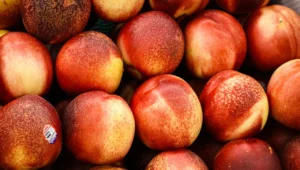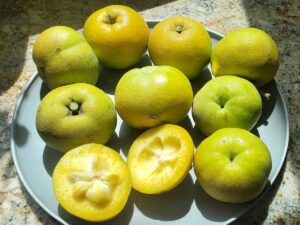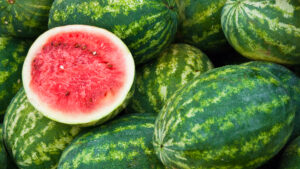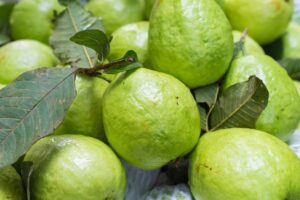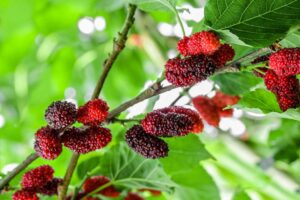How to Grow and Care for Soursop: A Complete Guide
Growing soursop (Annona muricata) can be a rewarding experience whether you have a spacious garden or just a large container on your patio. This tropical fruit tree, also known as graviola or guanabana, produces delicious custard-like fruits with incredible health benefits. In this comprehensive guide, I’ll walk you through everything you need to know about growing and caring for soursop trees in different settings across the US.
Understanding Soursop: The Tropical Treasure
Native to the Caribbean and parts of Central and South America, soursop trees can reach heights of 25-30 feet when grown outdoors. However, with proper care and pruning, you can successfully grow them in containers. The tree produces glossy, dark green leaves and unusual greenish-yellow flowers that develop into large, spiny, heart-shaped fruits weighing up to 10 pounds.
Soursop has gained popularity in the US market not only for its unique sweet-tart flavor but also for its reported health benefits. The flesh is used to make smoothies, ice cream, and other desserts, while various parts of the plant are used in traditional medicine.
Growing Zones and Climate Requirements
Before planting soursop, it’s important to understand its climate requirements:
| USDA Growing Zone | Suitability for Soursop | Notes |
|---|---|---|
| 10-11 | Excellent | Can be grown outdoors year-round |
| 9 | Good | May need winter protection |
| 8 | Challenging | Container growing with winter protection recommended |
| 7 and below | Indoor/Greenhouse only | Not suitable for outdoor growing |
Soursop is a true tropical plant that thrives in warm, humid conditions. According to the USDA Agricultural Research Service, the ideal temperature range is between 77°F and 82°F (25°C to 28°C). The trees are extremely sensitive to cold and can be damaged by temperatures below 40°F (4°C).
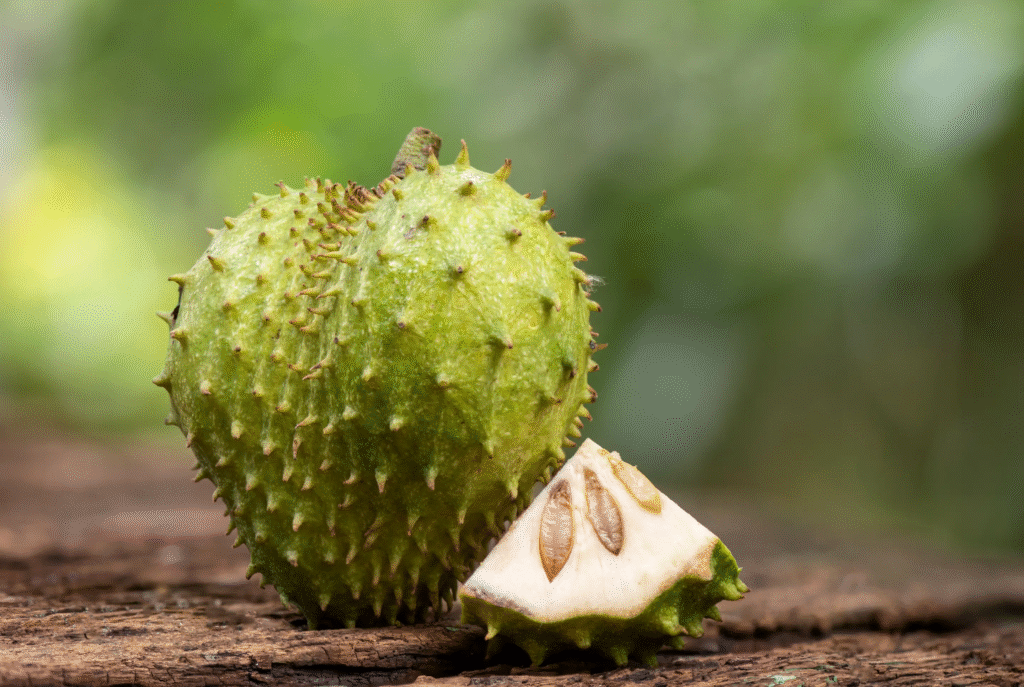
Starting Soursop from Seeds
Growing soursop from seeds is relatively straightforward but requires patience:
- Seed Selection: Extract seeds from a ripe soursop fruit. Rinse them thoroughly to remove all pulp and let them dry for 24 hours.
- Preparation: Soak the seeds in warm water for 24 hours to improve germination rates.
- Planting:
- Fill 4-inch pots with well-draining, fertile potting mix.
- Plant seeds about 1/2 inch deep.
- Water thoroughly but avoid waterlogging.
- Germination: Place the pots in a warm location (around 80°F or 27°C). Germination typically occurs within 15-30 days but can take up to 60 days.
- Seedling Care: Once seedlings emerge, provide bright, indirect light. Young soursop plants are sensitive to direct sunlight.
- Transplanting: When seedlings reach 6-8 inches in height with several sets of true leaves, they’re ready to be transplanted to larger containers or into the ground.
Growing Soursop in Containers
Container growing is ideal for regions where outdoor planting isn’t feasible due to climate:
- Container Selection: Choose a large container (at least 15-20 gallons) with good drainage holes.
- Soil Mix: Use a rich, well-draining potting mix. A combination of 60% potting soil, 20% compost, and 20% perlite works well.
- Planting:
- Add a layer of gravel at the bottom of the pot for drainage.
- Fill with soil mix to about 2 inches below the rim.
- Plant your soursop seedling at the same depth it was in its previous container.
- Water thoroughly after planting.
- Placement: Position the container in a location that receives 6-8 hours of sunlight daily but is protected from harsh afternoon sun.
- Mobility: The advantage of container growing is mobility—move your soursop indoors when temperatures drop below 40°F (4°C).
Growing Soursop Outdoors
If you live in USDA zones 10-11, you can grow soursop directly in your garden:
- Site Selection: Choose a location with full to partial sun and protection from strong winds.
- Soil Preparation: Soursop prefers slightly acidic soil (pH 5.5-6.5) with excellent drainage. Incorporate plenty of organic matter.
- Planting:
- Dig a hole twice as wide and as deep as the root ball.
- Space trees at least 15-20 feet apart to allow proper growth.
- Plant at the same depth as the sapling was in its container.
- Create a basin around the tree to hold water.
- Initial Care: Water deeply after planting and apply a 2-3 inch layer of mulch around the base, keeping it away from the trunk.
Water and Fertilization Requirements
Watering
Soursop trees have moderate water needs:
- Young Trees: Water 2-3 times per week during the first year.
- Established Trees: Once established, water deeply once a week or when the top 2 inches of soil feel dry.
- Container Plants: These typically need more frequent watering, especially during hot weather.
Maintain even soil moisture but avoid waterlogging, which can lead to root rot.
Fertilization
Proper nutrition is crucial for healthy growth and fruit production:
- Young Trees: Apply a balanced, slow-release fertilizer (NPK 10-10-10) every 2-3 months during the growing season.
- Bearing Trees: Switch to a fertilizer higher in potassium and phosphorus (like 8-3-9) when the tree begins to flower and fruit.
- Application Rate: Generally, apply 1/2 pound of fertilizer per year of tree age, up to a maximum of 10 pounds for mature trees.
- Micronutrients: Soursop benefits from occasional foliar sprays containing micronutrients, especially iron and zinc.
Pruning and Training
Regular pruning helps maintain tree size and shape:
- Formative Pruning: During the first 2-3 years, prune to establish a strong central leader with well-spaced branches.
- Maintenance Pruning: Remove dead, diseased, or crossing branches annually.
- Container Plants: More aggressive pruning is required to keep the tree at a manageable size. Prune after harvesting fruit.
- Height Control: Topping the tree at 8-10 feet encourages lateral growth and makes fruit harvesting easier.
Pest and Disease Management
Soursop is relatively pest-resistant, but can face some challenges:
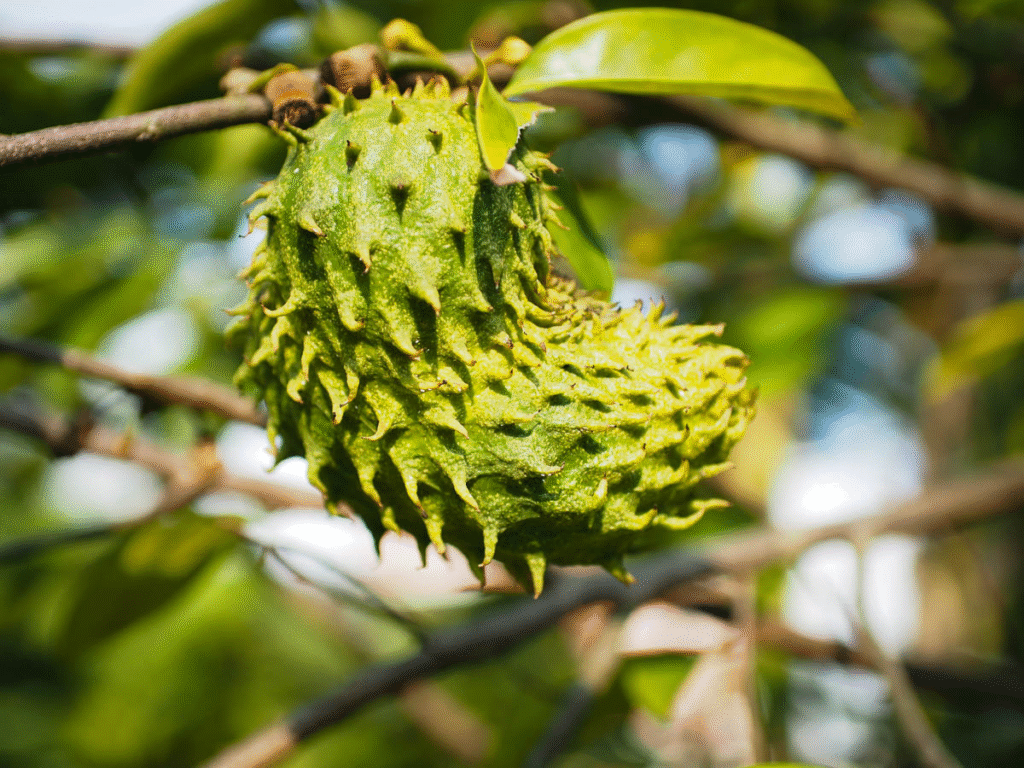
Common Pests
- Fruit Flies: Cover developing fruits with paper bags.
- Scale Insects: Treat with horticultural oil.
- Mealybugs: Remove with a strong stream of water or cotton swabs dipped in alcohol.
Diseases
- Anthracnose: Apply copper-based fungicides as a preventive measure.
- Root Rot: Ensure proper drainage and avoid overwatering.
- Bacterial Leaf Spot: Remove affected leaves and avoid overhead watering.
The University of Florida IFAS Extension provides excellent resources on tropical fruit pest management that can help you identify and address specific issues.
Harvesting and Using Soursop
With proper care, container-grown soursop trees can begin fruiting within 2-3 years, while those planted in the ground may take 3-5 years.
When to Harvest
Soursop fruits are ready to harvest when:
- They change from dark green to a lighter yellowish-green
- The spines soften and become more pliable
- The fruit yields slightly to gentle pressure
Harvesting Process
- Use pruning shears to cut the fruit with a short section of stem attached.
- Handle carefully to avoid bruising.
- Allow fruits to finish ripening at room temperature until they yield to gentle pressure.
Culinary Uses
Soursop has numerous culinary applications:
- Fresh Consumption: Scoop out the flesh and eat with a spoon, avoiding the seeds.
- Beverages: Blend the flesh with water, sugar, and lime juice for refreshing drinks.
- Desserts: Use in ice creams, sorbets, and custards.
- Smoothies: Combine with other tropical fruits for nutritious smoothies.
US Market Potential
Interest in soursop has been growing in the US market, particularly among health-conscious consumers and in areas with large Caribbean and Latin American populations. According to a report from the National Agricultural Library at the USDA, tropical fruit consumption in the US has been steadily increasing.
If you’re considering growing soursop commercially:
- Target farmers’ markets and specialty stores in urban areas
- Connect with restaurants specializing in Caribbean and Latin American cuisine
- Consider value-added products like soursop puree or frozen pulp
Troubleshooting Common Issues
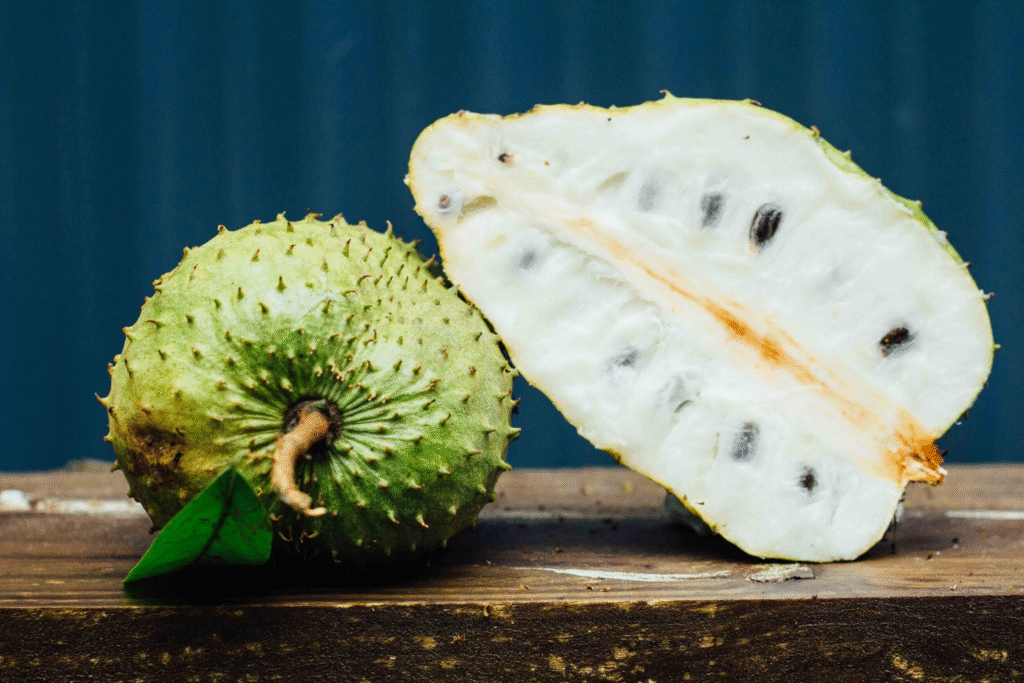
Dropping Flowers
- Cause: Irregular watering or extreme temperatures
- Solution: Maintain consistent watering schedule and protect from temperature extremes
Fruit Drop Before Maturity
- Cause: Usually insufficient pollination
- Solution: Hand-pollinate flowers using a small brush in the early morning
Yellow Leaves
- Cause: Could indicate nutrient deficiencies, particularly iron or nitrogen
- Solution: Apply appropriate fertilizers and check soil pH
Conclusion
Growing soursop requires some attention to detail, especially regarding temperature and water requirements, but the rewards are well worth it. Whether you’re cultivating this tropical treasure in a garden in southern Florida or in a container that moves indoors during winter in cooler regions, you’ll enjoy both the gardening experience and the unique fruits it provides.
Remember that patience is key—soursop trees take time to establish and begin fruiting. With proper care and attention to the guidelines outlined above, you’ll be well on your way to successfully growing and enjoying this exotic superfruit in your own home or garden.
